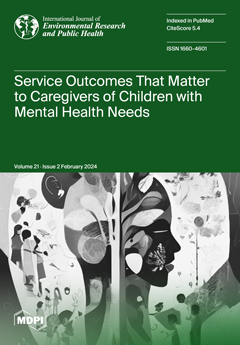Background: Surf and hike therapies have demonstrated effectiveness as adjunct interventions for service members with major depressive disorder (MDD). This study explores gender differences in intervention outcomes following a pragmatic, randomized controlled trial of Surf and Hike Therapy for service members with MDD
[...] Read more.
Background: Surf and hike therapies have demonstrated effectiveness as adjunct interventions for service members with major depressive disorder (MDD). This study explores gender differences in intervention outcomes following a pragmatic, randomized controlled trial of Surf and Hike Therapy for service members with MDD (
N = 96; men,
n = 46; women,
n = 50). Methods: Clinician-administered and self-report measures (depression, anxiety, positive affect, negative affect, resilience, and pain) were completed at preprogram, postprogram, and 3-month follow-up; brief measures (depression/anxiety and positive affect) were completed before and after each session. Results: Multilevel modeling results showed that anxiety decreased from pre- to postprogram and significantly differed by gender (B = −2.26,
p = 0.029), with women reporting greater reductions. The remaining outcomes from pre- to postprogram demonstrated significant improvements that did not differ by gender (
ps = 0.218–0.733). There were no gender differences through follow-up (
ps = 0.119–0.780). However, within sessions, women reported greater improvements in depression/anxiety (B = −0.93,
p = 0.005) and positive affect (B = 3.73,
p = 0.001). The change in positive affect scores within sessions was greater for women in Hike Therapy compared to men (
p = 0.016). Conclusions: Overall, results demonstrate that both genders benefit from adjunctive Surf and Hike Therapies, but women exhibit a better response in terms of longer-term anxiety and immediate psychological outcomes.
Full article





